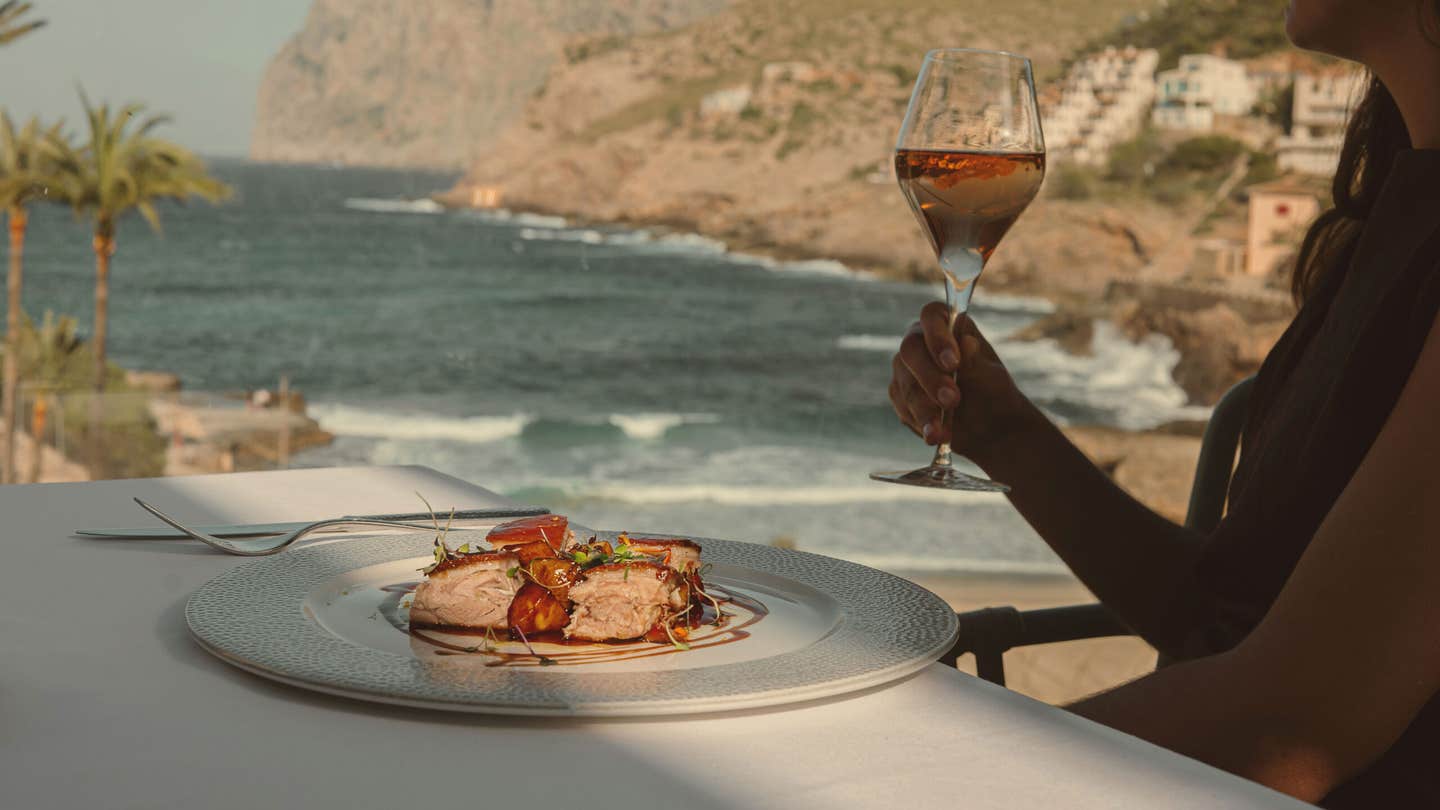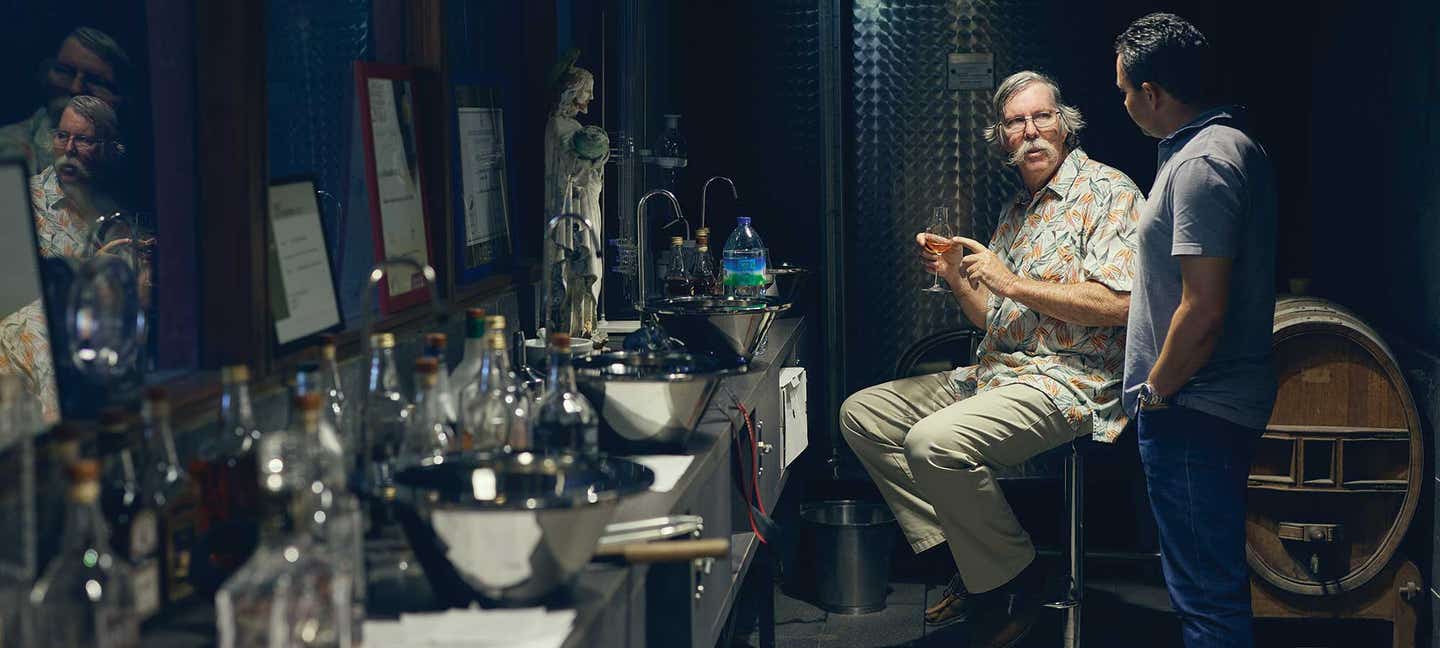
This Importer Is Bringing Back Some of the Caribbean’s Best Rum
A trip to Martinique for the island’s unique rhum agricole with importer Ed Hamilton
Rum production on Martinique traditionally wraps up by the first week of June, just before the arrival of the rainy season, but Habitation La Favorite was still running at full steam when I arrived on the 12th of the month this past year. The distillery, a ramshackle cinder block and corrugated metal structure, is tucked into a ravine at the end of a dirt drive in the lush hills above the island's capital, Fort-de-France. When it is running, you smell it before you see it: acrid smoke and the sickly sweet vapors of fermenting sugarcane juice.
The cane-growing season had been troubled and late-ripening, partially on account of the previous year's record-breaking hurricane activity, and owner Paul Dormoy was scrambling to make up for lost time before the Caribbean's summer rains returned and destroyed his crop. Most rum distillers don't have these kinds of problems, but the dominant style on Martinique is rhum agricole, "agricultural" rum, which is distilled from highly perishable, fresh-crushed sugarcane juice rather than the far more common (and shelf-stable) molasses. Time was of the essence.
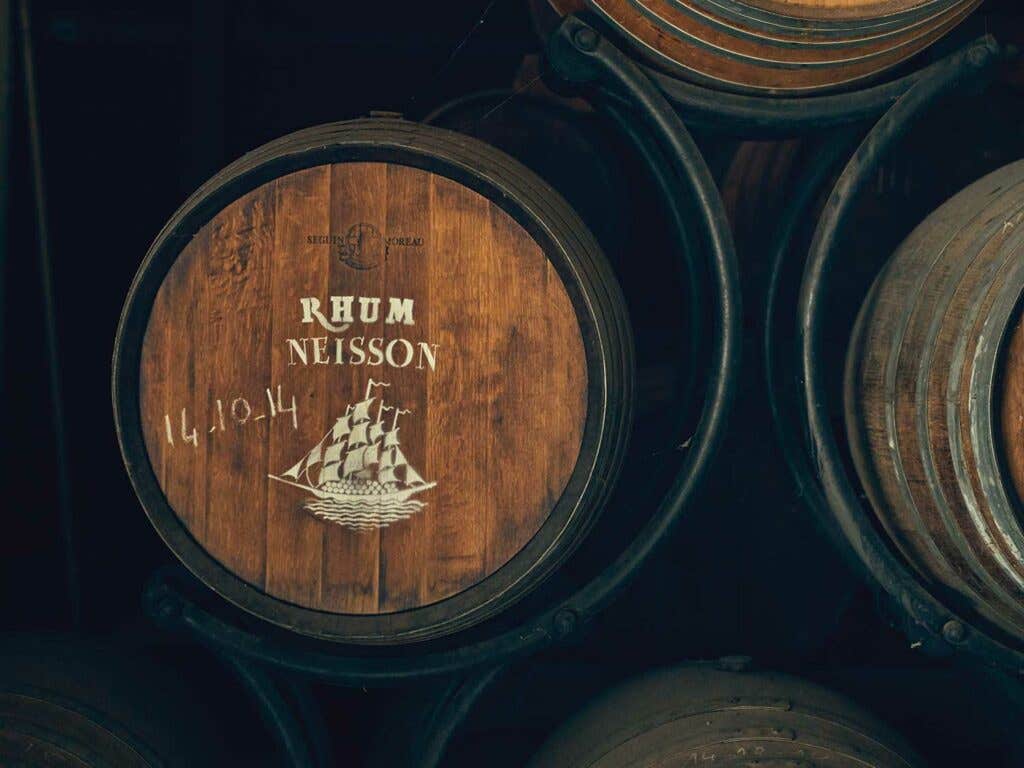
I was visiting the island with Ed Hamilton, La Favorite’s American importer and one of the world’s foremost experts on the spirit. Hamilton had come to hash out some points of contention with management. An order had arrived in unlabeled boxes and caused chaos in his warehouse in New York, and another had arrived in the wrong proof. He also wanted to check on how things were progressing after a difficult period for the distillery, which had suffered a series of mechanical issues.
An old-fashioned agricole distillery is animated by sugarcane alone. Steam-powered conveyor belts feed cane into a crusher, a tangle of gears that pulverize the grass to extract the cane’s juice. The juice is then diverted into enormous steel tanks to ferment into a lightly alcoholic sort of wine. The post-crush cane continues on to another series of conveyor belts to be burned in a furnace, which provides the steam that powers the machinery and heats the still.
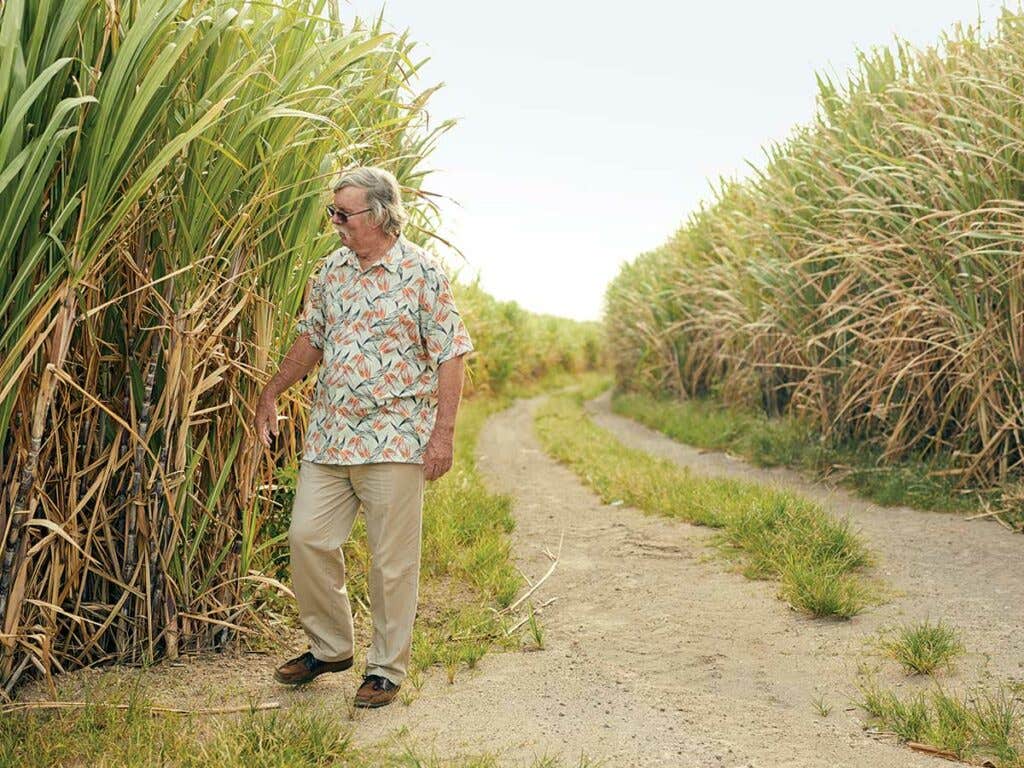
At La Favorite, workers without so much as a pair of safety glasses supervised, periodically intervening when a clump of crushed cane threatened to gum things up. The machinery whirred and clanked deafeningly; steam hissed out from weak spots in the plumbing. “It’s music!” Dormoy shouted above the din.
The heart of the operation, a pair of 20-foot-tall column stills, roared away against the west wall, concentrating the post-fermentation sugarcane wine into rum. Boiling liquid sloshed around in portholes as banks of analog gauges twitched under fogged glass. At the base of each still, a fountain of white rum spilled out at the pace of a kinked garden hose. The left still was more modern, constructed partially of stainless steel. The right still—made out of dull copper and held together by primitive clamps—seemed ancient by comparison, as if Captain Nemo from 20,000 Leagues Under the Sea had turned to alchemy rather than naval architecture.
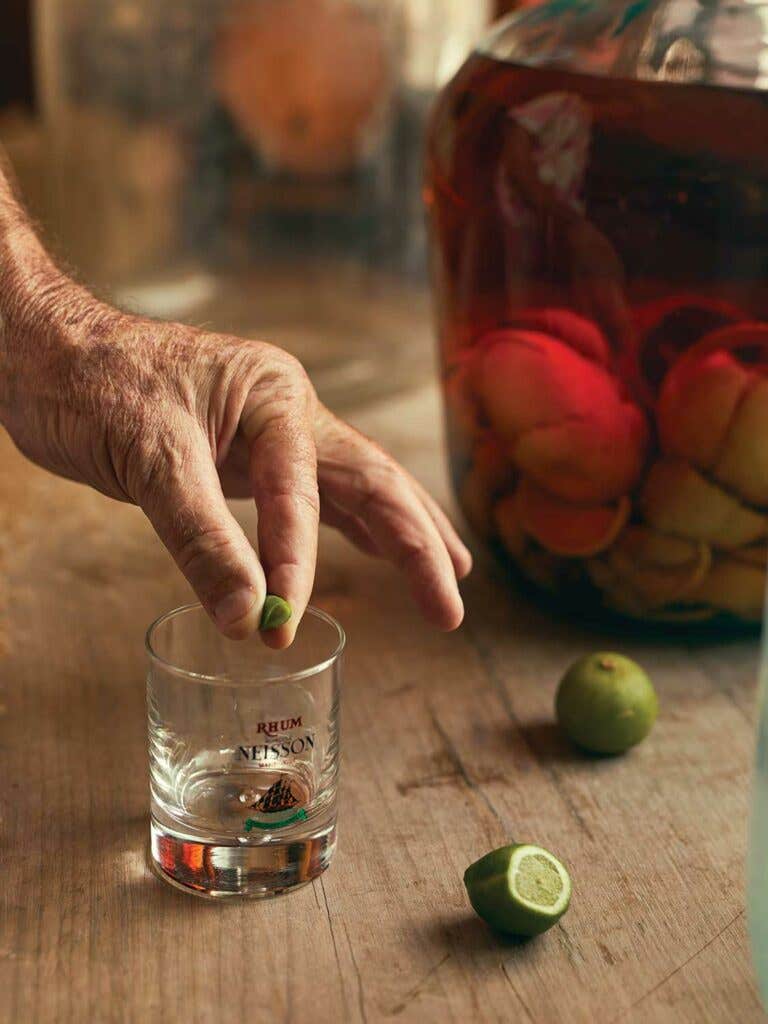
Hamilton has earned a reputation as a defender of the old-fashioned and authentic in the world of rum, and it went without saying that he preferred the older still. It produces the rum for the main La Favorite product—the one he imports—while the liquor from the left still is sold in bulk and used in lower-cost bottles. He encouraged me to compare the just-born liquors by sticking my finger into each stream. The rum streaming out had been distilled to about 75 percent alcohol—150 proof—and the sample from the left still tasted every bit of it—fiery and harsh. But from the right, the rum had the burning sweetness of raw ethanol but immediately receded into a sort of chalky mellowness. I looked back at Hamilton, then stuck my hand back into the right stream for another taste. He grinned. “It’s not bullshit, right?”
The question of whether something is bullshit is a persistent one among rum lovers. Today, the spirit has a reputation—one that's mostly been earned—as a low-quality party fuel, suitable for sweet boat drinks and underage guzzling. "Rum is a junk category," says San Francisco bartender Thad Vogler. "Virtually all of it is garbage." This is not to say Vogler is a rum hater: He opened Bar Agricole, named in tribute to the Martinique style, in 2010. (It has been a finalist for the James Beard Foundation's bar program award every year since 2012.) The problem, to Vogler and other frustrated rum enthusiasts, is twofold. On the low end, the rum trade is dominated by a handful of enormous distilleries that flood the market with flavorless industrial liquor, essentially vodka that happens to be made from sugarcane, much of it subsidized by one government or another.
Then, on the high end, many aged rums are dosed with sugar and other added flavorings, making them more of a liqueur than a proper spirit to enthusiasts. These additions are typically a trade secret, but a subculture of amateur sleuths has developed on the internet: They test for sugar with their own hydrometers and trade screenshots from the websites of state-owned liquor stores of Nordic countries, which make sugar content public. They have discovered, to take one example, that Ron Zacapa 23, a popular top-shelf Guatemalan rum, contains about 20 grams of sugar per liter, about as much as a semisweet German riesling.
These two poles represent the vast majority of rum on the market. But for those who know where to look, there are pockets of transcendence, like the unadulterated treasures made at Foursquare on Barbados or overproof Jamaicans like Rum Fire that project intoxicating ripe-banana funk all the way into the next room. "I taste some of these rums with whiskey people, and they're converted for life," says Fred Minnick, a bourbon expert who branched out to publish a book titled Rum Curious last year. "The great rums are pound for pound as good as the great whiskeys and brandies."
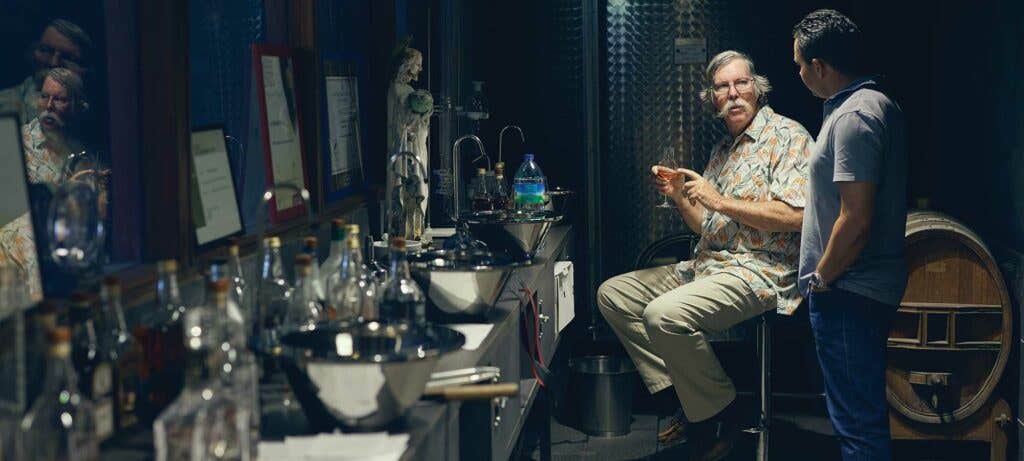
Hamilton has made the search for the good stuff his life’s work, first as an author and educator, then as an importer. He has done it all with a cranky and outspoken obsession with transparency. “He was out there preaching about high-quality rum before rum was cool,” Minnick tells me. “Now there are people interested in it and money flowing into it, but we still have this shit rum. He was talking about the shit rum before anybody. He had the guts—and I mean this—to stand up to the big brands to say, ‘You suck.’”
There may be no denser concentration of pure, honest rum than on Martinique, where Hamilton got his start importing. The island is some 200 miles from South America in the Lesser Antilles, the volcanic arc of islands that defines the border between the Caribbean Sea and the Atlantic Ocean. It is also a department of France, an integral component of the Republic, with representation in Parliament just like Paris or Marseilles.
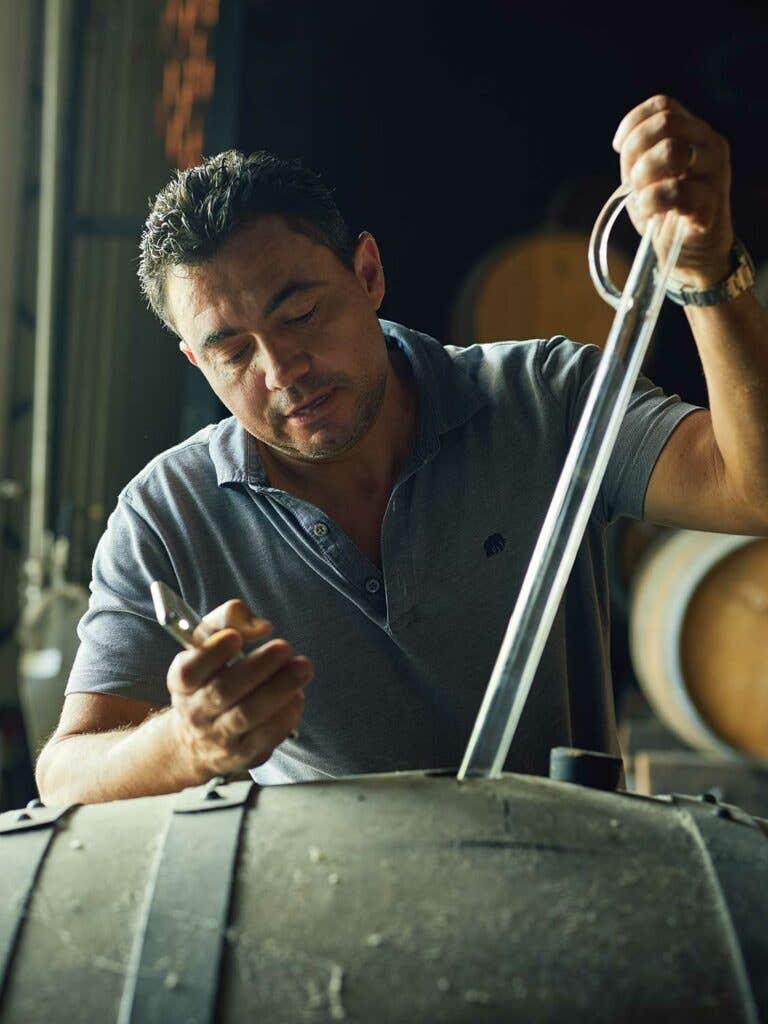
The rum industry has benefited from this arrangement. Shiny distillery equipment with a sign indicating it was purchased with the support of European Union agricultural programs is a common sight on the island, and French labor regulations have outlawed the exploitation of sugarcane field workers that is too common throughout the rest of the Caribbean. But the greatest benefit to the island's rum has come from the French national genius for food bureaucracy. Rhum agricole from Martinique is regulated by an appellation d'origine contrôlée, an AOC, France's designation for products that may be produced only in a given region. This means the rum is subject to the same sort of rules that govern the production of Bordeaux wine or Bresse chickens. In Martinique, the rules dictate everything from the maximum distillation proof to the time of year it's legal to distill, and they proscribe many of the bad practices that make rum such a troubled category—flavorless ultra-high-proof distillation, misleading aging claims, added sugar and flavorings. Rums made from fresh sugarcane juice are found elsewhere, and even some Brazilian cachaça is similar, but the AOC enforces a baseline level of quality on the island, which helps the style reach its highest highs here.
The island, population 375,000, is about a third the size of Rhode Island but feels much larger because of its ruggedness: Dense ripples of cane field and rainforest mean the roads are never straight. On the north side of the island, a volcano called Mount Pelée rises to more than 4,500 feet above sea level just a few miles from the sea.
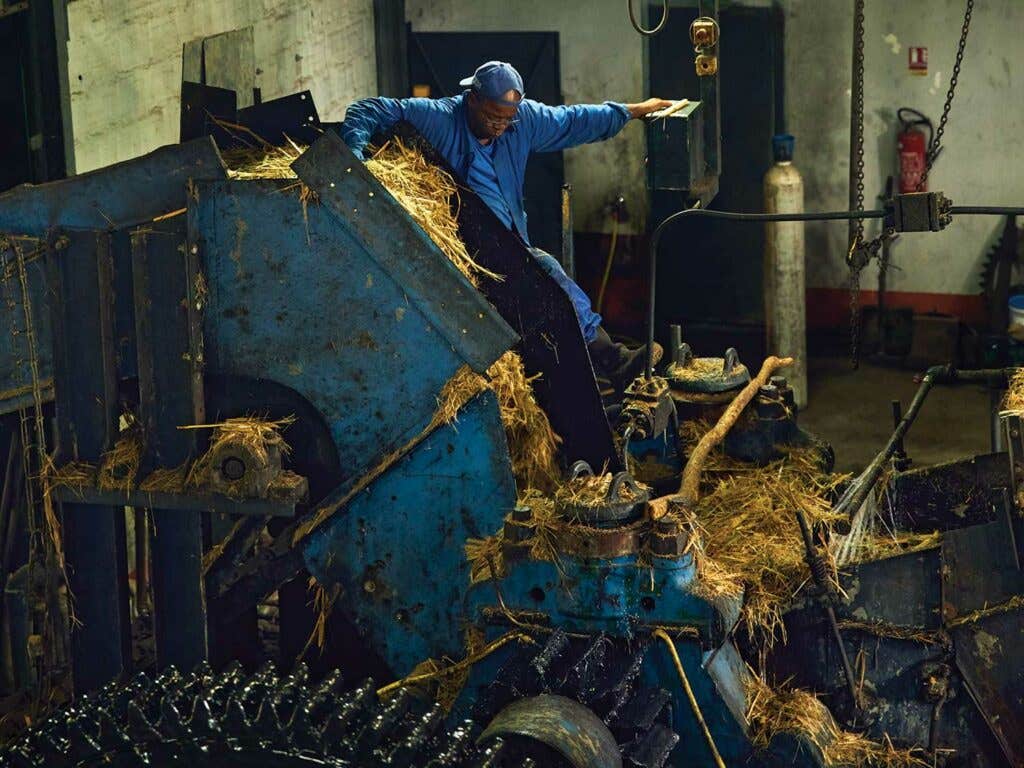
Martinique was a center of France’s brutal colonial slavery regime for nearly 200 years, responsible for producing sugar and oceans of molasses-based rum. The two typically go hand in hand: Molasses is essentially a waste product of sugar production. (Disposing of it was enormously annoying to the first colonial sugar barons before rum distillation was developed early in the 17th century.) Two disasters struck around the turn of the 20th century. Mount Pelée erupted in 1902, killing 30,000 people, destroying the city of Saint-Pierre (then the capital and one of the most developed cities in the Caribbean), and leading to the closure of many small distilleries. The other disaster was slower moving. Over the course of the 19th century, European agronomists bred ever-more-potent sugar beets, encouraged by Napoleon and other leaders eager to find a way to produce sugar in cold climates. Their efforts led to a glut on the world market, plummeting prices, and the collapse of the Martinique sugar industry.
In 1887, at the height of the sugar crisis, a politician named Homère Clément purchased a bankrupt plantation. Clément was a popular figure on Martinique. The son of a slave, he was the first person of color to become a licensed medical doctor in France, and he represented the island in the National Assembly in Paris as a radical-socialist. Rather than let his new estate’s crop rot in the field, he began making rum directly from cane juice. Other people had made rum this way, but Clément did it on a larger scale, and used his clout to champion the style. Today, the vast majority of the rum produced on Martinique is made from fresh cane juice.
Hamilton is 64 years old, 6 feet 5 inches tall, and perpetually clad in a Hawaiian shirt and Panama hat. He keeps his white hair shaggy and maintains an enormous white walrus mustache. The overall effect is of a rum importer as imagined by a Times Square caricaturist.
Hamilton came by the look honestly. The story he likes to tell is that in 1978, when he was 24, he was working as an engineer for a company that made tiny, powerful actuators for airplanes and bombs. His boss asked him to write down his five-year plan, and how he planned to get there. He wrote: “Go sailing. I quit.”
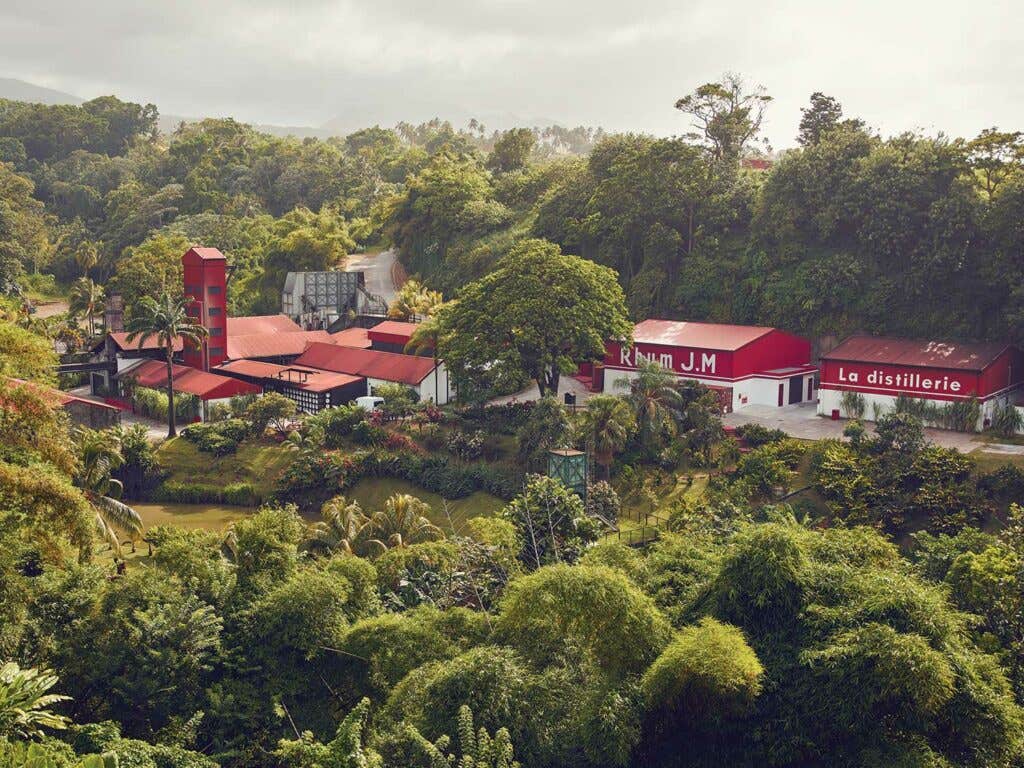
He moved to Taiwan to build sailboats, then found one-way work in Singapore as the engineer on a commercial ship bound for Manila. (“Hired off a bar stool—I was not qualified.”) He ended up based in Perth, Australia, working as an engineer on oil rigs across Southeast Asia, and resolved to stay until he could afford a boat of his own. The job meant white-knuckle plane flights and nights spent sleeping in shipping containers in the Papua New Guinea jungle.
Five years after quitting his desk job, Hamilton bought a 38-foot sloop. He sailed for years until, during a rum-fueled full-moon reverie, he came up with the idea of visiting every distillery in the Caribbean. It still seemed like a good idea in the morning, and he turned his years of wanderings into the still-active Ministry of Rum, the first large website devoted to the subject, and several books, including 1997's The Complete Guide to Rum, which described close to 200 distilleries at a time when the largest liquor store in the country had seven rums on the shelf.
Hamilton supported himself with odd cash jobs, most colorfully smuggling rum and cigarettes and tourist knickknacks ("everything but drugs") between Caribbean islands. But this was just one job among many. An engineer's skills were always in high demand in ports packed with sailboats in various states of disrepair. And an all-time jackpot gig came when he and a group of friends made $50 a day as extras on the set of Speed 2: Cruise Control, which was filmed in St. Martin. He still talks ruefully about not having time to work on Pirates of the Caribbean like the rest of his crew.
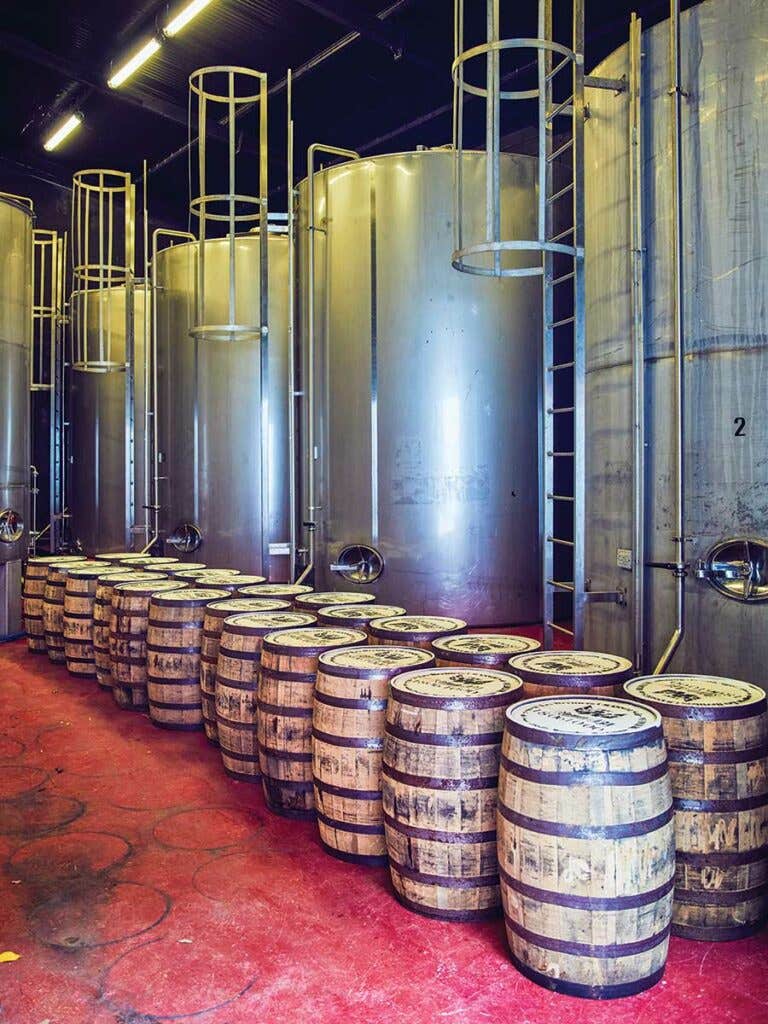
By then he had gained a business partner and an importing license. His first containers of Martinique rum left the island in 2004. “I just wanted to bring back rum for my friends,” he says. “I thought, if this doesn’t work, great. I’ll end up back on a 45-foot cutter in the Caribbean.” There were complicated years during the Great Recession, when Hamilton had to buy out sole control of the business. But the operation has seen steady growth, and his portfolio of a few dozen rums is now available in 42 states.
More than other liquor brands, Hamilton’s business model recalls figures in the wine industry, like Kermit Lynch, who challenged American consumers to seek out smaller producers making a purer, unadulterated product—preferably one he imported. Hamilton’s portfolio has expanded to include a line of Hamilton-brand rums he buys in bulk from distilleries in St. Lucia, Jamaica, and Guyana, offering everything from vintage rarities to cocktail workhorses with the same focus on transparency. The idea was never to sell only to collectors and connoisseurs—in almost every state, you should be able to find or order his rums at a decent liquor store.
“When I get a Demerara rum from Ed Hamilton, it’s going to have the right charred-wood taste, the right kind of smoke. It’s going to have every characteristic that is going to make a tropical drink taste the way it’s supposed to,” says Jeff Berry, a writer and bar owner responsible for reconstituting much of the once-lost tiki cocktail canon. “I know it’s going to be a pure rum. It’s not going to have any additives or flavorings. He’s jousting with these corporate behemoths that are flooding the category with anonymously sourced, adulterated product. Rum needs people as dogmatic and single-minded as Ed is.”
Out of a solo sailor’s combination of thrift and misanthropy, Hamilton runs the business completely by himself, doing everything from distribution contracts to sales calls to logging inventory on his own homebrew software. He now splits time between Florida and Southern California, and spends much of the year flying around the country with his girlfriend, Caroline, an old friend from his boatbuilding days, on the move from bars to conferences to distributor offices. In 2009, Hamilton’s 45-foot cutter was destroyed by termites while in dry dock on Saint Lucia.
Hamilton's easygoing island-time appearance is just a thin veneer over a detail-oriented and competitive personality, and the supposed inauthenticity of his rivals is one of his favorite topics. Rhum J.M. was already the best-looking distillery on Martinique before it was purchased by Bernard Hayot, an industrialist who controls a huge portion of the commerce on Martinique. Since then, the facility has been expensively renovated, with a fresh coat of bright-red paint, every surface buffed to an antiseptic shine. It now runs on electric power. While there is no reason to suspect that this results in an inferior rum, when I visited with Hamilton, he grinned as he pointed out that the pristine steam engine was now mostly decoration.
J.M.’s new management also sped up their fermentation process, the step when rum develops much of its flavor. The faster fermentation is not a secret—the tour guides brag about it to visitors. But to hear Hamilton tell it, the change ruined what had once been pretty good rum.
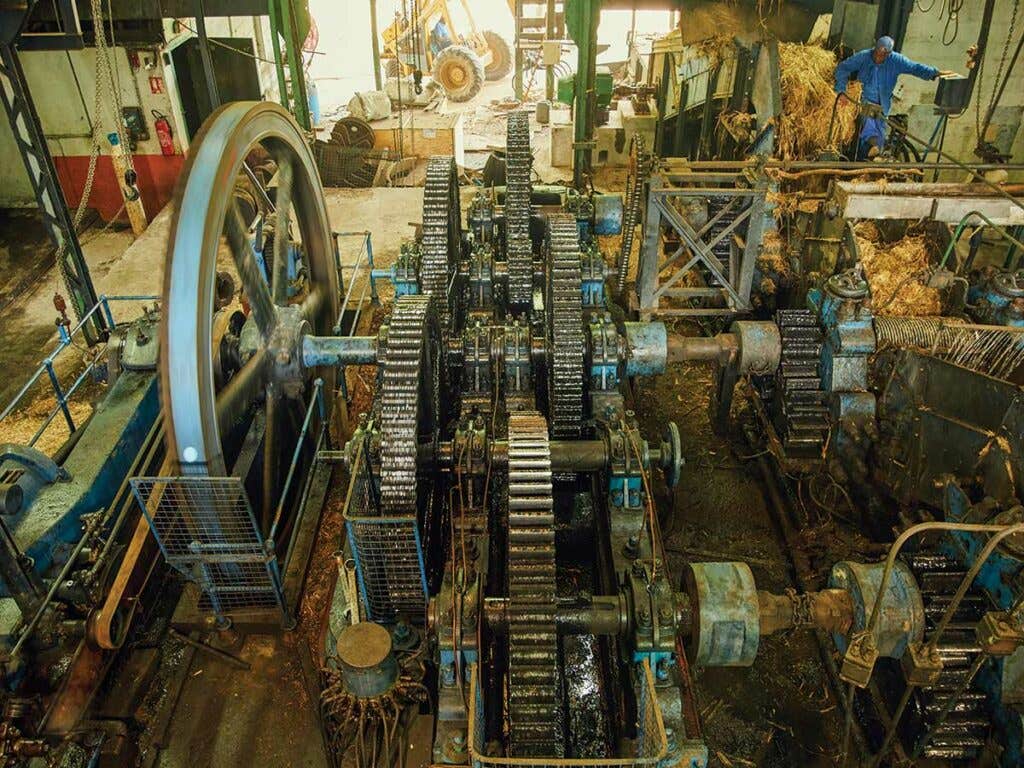
“I am not the rum police,” Hamilton likes to say, before launching into a diatribe about one of his competitors. The spirits industry does run on secrecy, back-slapping insiders, and enormous marketing budgets, and Hamilton is a voice in the wilderness standing up for better rum. But he sometimes makes little distinction between bad rum and artisanal products that he happens to be competing with.
After visiting J.M., we drove to the estate where Homère Clément first distilled rhum agricole. Rhum Clément is also owned by Hayot, and while production has been moved to a large distillery on the island where several other brands are made, the grounds are still home to aging facilities and a tasting room—plus a contemporary art exhibition—which are open for tours. There was plenty for Hamilton to raise his eyebrows at: the quintessential Martinique distillery reduced to a museum. But he went further—insisting, mistakenly, that the bulk of their lineup hadn’t been made according to the AOC rules. This was based on a simple misreading of the label, but it was easy to see how stuff like that could irritate his competitors.
Both J.M. and Clément are imported to the United States by Ben Jones, a great-grandnephew of Homère Clément. He got his start importing the very same month as Hamilton. It’s remarkable how much they sound like each other when decrying the flaws of the category as a whole. But the two are bitter rivals, and Hamilton’s combativeness frustrates Jones, who says it doesn’t make sense for Martinique producers to fight for the same tiny slice of a much larger pie. “Agricole is one-tenth of 1 percent of all the rum in the United States,” he says. “A rising tide lifts all ships. When Ed gets into all of that, he doesn’t do the category any favors.”
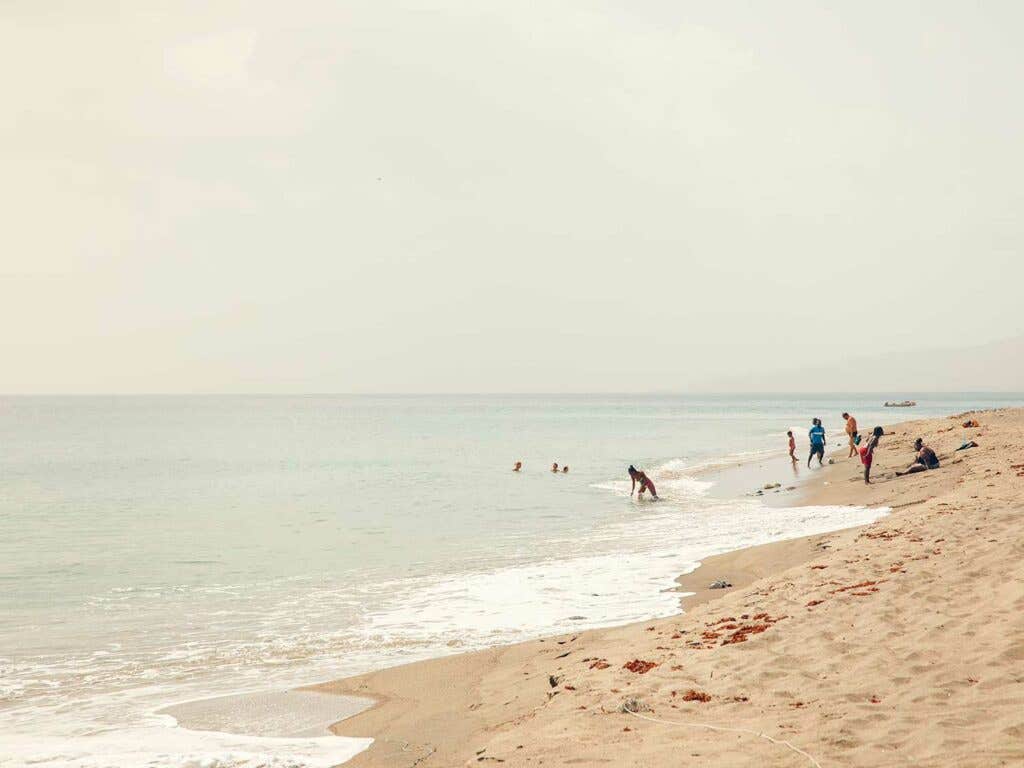
Hamilton is at least an equal-opportunity griper. The primary reason for this particular visit to Martinique was a stop at Distillerie Neisson, the crown jewel of his portfolio, a family-owned operation that's considered by many to be the best on the island. It's tiny, even by the standards of Martinique distilleries, painted in saturated shades of purple and lime green. We weren't there for 10 minutes before Hamilton scampered into a pile of sugarcane, dodging a swinging set of mechanical jaws that were actively loading the cane into the distillery. He was dismayed by what he found. Cut sugarcane begins to spoil almost immediately after it is harvested, and the cane he pulled off the pile had gone soft on the ends. Owner Grégory Vernant emerged from his office and confirmed Hamilton's hunch, aghast: There had been a mechanical problem on Saturday afternoon, and it was now Monday morning.
Vernant is in the last phases of taking over the distillery from his mother, Claudine Neisson-Vernant, 76. Vernant has chosen to take over the business even though he could sell out to a big multinational luxury-goods company and retire whenever he wanted. He says Hermès was the most recent suitor, and that they were offended when he demurred before they could even name a price.
Vernant talks like a winemaker, about terroir and the flavor of particular yeasts. He’s experimenting with aging rum in expensive, brand-new American oak barrels. (Most Martinique rum is aged in used bourbon barrels.) When things are really humming at the distillery, he shows off by bottling 70 percent alcohol rum straight off the still, essentially raw distillate. This is practically unheard of in the world of distilling—raw liquor is generally disgusting. But these bottlings are sought after by collectors.
Vernant is most passionate about his organic rum project. Neisson is the first distillery on Martinique to work with organic cane, though the venture has not been without its problems. Yields have been lower than conventionally farmed cane, and issues in the fields were why Neisson was still producing so late in the season. Vernant says it’s worth it, that eventually the entire estate will be organic, that he’s seen the changes in the fields himself. “People think I’m crazy when I start talking about the butterflies,” he says, “but I’m never going back.”
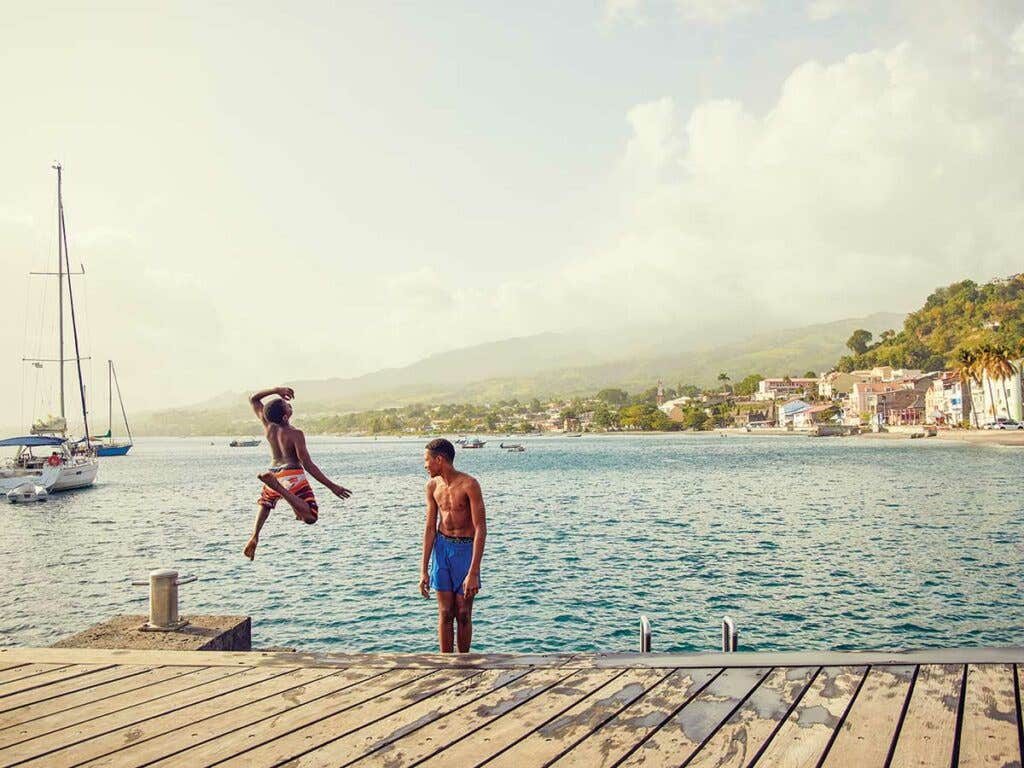
Hamilton had come to Neisson to taste barrel samples to sell as limited-edition single-barrel and vintage bottlings. Rum aged in the harsh, hot climate of the tropics matures much faster than it does in cooler parts of the world, and these old agricoles had become formidably concentrated in flavor. Hamilton clearly still loves rum, and drinks it most days, but he tastes it like a merchant rather than an enthusiast. “This is so smooth,” he said at a couple of points. “But can I afford it?”
Vernant returned to the aging warehouse for another sample. Hamilton turned. “I knew this son of a bitch was going to do this to me. I came to buy five barrels of this rum, which I can afford,” he said, pointing to a sample of a younger blend. “He shows me three other vintages that are much better,” he said. “When you get a chance to buy something like this, you buy it, but this trip is going to cost three times as much as I thought it was going to.”
The aged Neisson rums were markedly more intense than anything else I'd tasted on Martinique, and Hamilton's bottles are sure to be quickly snapped up by American connoisseurs. But on Martinique, most people drink the fresh, unaged white rum. If you remember your first sip of good mezcal after a lifetime of big-brand tequila, the first taste of unaged agricole is a similar kick in the teeth. It is a bracing expression of the essence of sugarcane, a grass. Attempts at describing its flavor invariably skew green: lime peel, olives, basil, freshly mowed golf course.
It's typically consumed as a ti' punch. Short for petit punch, it's as simple as cocktails get: a tiny bit of lime, a little of the flavorful local sugar, and a glug of rhum agricole. They don't actually drink mai tais in the South Pacific, and good luck finding a decent daiquiri in Havana these days, but the ti' punch is what people on Martinique actually drink.
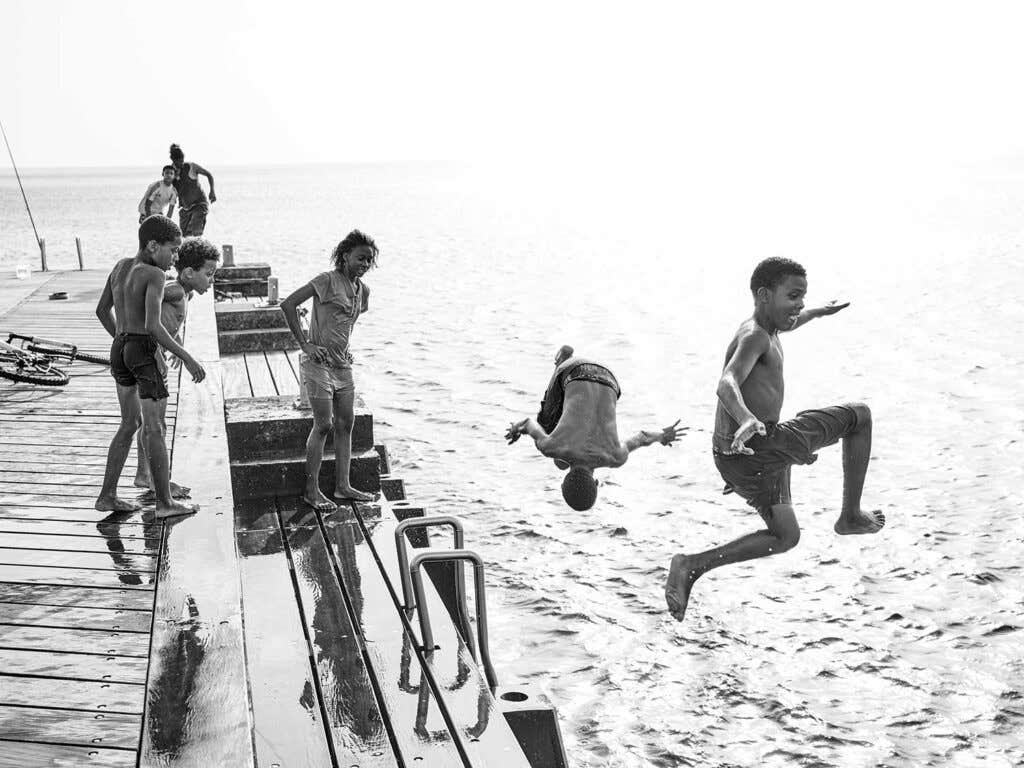
I thought of this on the way to lunch late one morning. Hamilton was holding forth about his favorite topic, in this case about a particularly “heavy” Jamaican rum, one that includes liquor from late in the distillation process that is usually thrown out. “It’s unfit for human consumption. The Jamaicans don’t drink it,” he said. “It is not part of the culture there. Actually go to Jamaica, or Trinidad, or wherever else, and find out what they’re actually doing there.” It was an inadvertent summary of the entire Hamilton worldview.
We arrived at the restaurant, in Sainte-Anne, on the south side of the island, little more than an open-air wooden platform perched spectacularly above the harbor. It was four minutes before noon, but Hamilton’s broken French got us a round of Neisson ti’ punches. Down below, crews were racing yole boats, colorful traditional canoelike crafts with rectangular sails. It was the low season, and the bar was sparsely populated by local guys chatting in Creole and half-watching the boat race. They were drinking ti’ punches too.
Correction: Mar. 28, 2019
An earlier version of this article misstated where Hamilton moved to build sailboats. It was Taiwan, not Singapore.
Keep Reading
Continue to Next Story









